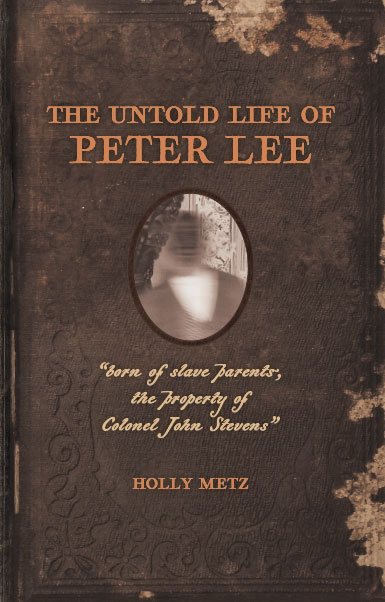
Whatsoever good thing any man doeth, the same shall he receive of the Lord, whether he be bond or free.—Quotation from Ephesians 6:8, reproduced on the base of a plaque made for the Stevens family, in memory of Peter Lee.
THERE WAS SOMETHING wrong with the bronze plaque. Not a spelling error, or any problem with its condition; it had been kept safe and dry for more than a century, housed inside the stone Church of the Holy Innocents, a “miniature cathedral” commissioned by a member of the “founding family” of Hoboken, New Jersey.1 I stood before the memorial tablet, the city’s only public reference to slavery, and read it again:
In Affectionate Memory of Peter Lee
1804-1902
His grandparents Peter and Nancy were slaves
In the family of James Alexander, Attorney General of the Province of New York and were given to his daughter Elizabeth, wife of John Stevens, Vice President of the New Jersey Council during the Revolutionary War. Peter Lee was freed by the New Jersey Law, but remained All his life at Castle Point, where he faithfully served five Generations.
The plaque’s statement was perplexing—not only because of what it said, but for what it didn’t say. It revealed almost nothing about Peter Lee, except that he’d been enslaved by the Stevens family and had continued to serve them after his emancipation. Even the type of service he’d furnished was missing. The Stevens’s lavish estate, built on a promontory of serpentine rock overlooking the Hudson River, had needed numerous footmen, waiters, coachmen, gardeners, and gatekeepers during the years Lee had labored there— never mind the positions assigned solely to women.2 But the tablet conveyed more of the personal history of two patriarchs of the extended Stevens family than it did about the man to whom the plaque was dedicated. Two of his enslaved grandparents were named—allowing the inclusion of feats by contemporaneous Stevens slaveholders— but there was no mention of Lee’s parents, who, it inferred, were also held in bondage by the Stevenses. Otherwise, how had Peter been enslaved?
I wondered how he had lived his 98 years. If he had been “freed by the New Jersey Law”—the state’s “Act to Abolish Slavery”—he would have been held in bondage by the Stevens family for 42 years before the 1846 statute simply transformed all New Jerseyans who remained enslaved into “apprentices,” still legally bound to serve their “owners,” until discharged.3 Was Lee emancipated in 1846? And where was his family during his years of enslavement? The memorial gave no clues.
I did know something of the history of the Stevens family, though, especially their attainment of an immense fortune, their engineering feats, and development of Hoboken; I had lived in the city for decades. Who could live in Hoboken and not know a few stories about the Stevenses and their vaunted accomplishments?
But Peter Lee, despite having been memorialized, remained a cipher; the plaque dedicated to his memory worked to erase him: This is all needs saying about Peter Lee. He was to be remembered solely for his lifelong toil for the Stevens family. The nullifying of nearly all of his life story, the disappeared histories of others in bondage to the Stevenses, including Peter Lee’s parents and grandparents, were a goad to me. When I talked with other Hoboken residents about slavery in our city, several expressed disbelief: Here? They had learned in school—I had, too—that prior to the Civil War, the United States had been divided between “free states” (the North) and “slave states” (the South). They might have believed Northerners had never been slave-holders. None had seen the plaque in the Church of the Holy Innocents—it was mostly seen by congregants—and they did not know it mentioned three people the extended Stevens family had claimed as property. How many others? Who cleared the founders’ land and farmed it? Who built the roads? Who butchered the founders’ animals, cooked their meals, emptied their chamber pots? I wondered whether the people enslaved by the Stevenses were able to negotiate with their captors, whether they found ways to resist.
The question of resistance caused one or two residents I spoke with to blanch. Was it the thought that the founders of our city might have been unsparing taskmasters? Or because the people the Stevenses enslaved might have resisted, in ways both overt and passive, solely because they were unfree? One resident mused that if Peter Lee had not been happy, he could have left the Stevenses after the national emancipation. I wondered, too, why he had stayed. Maybe happiness had nothing to do with it. I didn’t know if I could learn what kept Lee at the Hoboken mansion, or if I would even be able to answer any questions I had about his life, the lives of his ancestors, or the attitudes of the family that enslaved them, but I had to try, in “a protest against forgetting.”
Cover design by Ann Marie Manca
